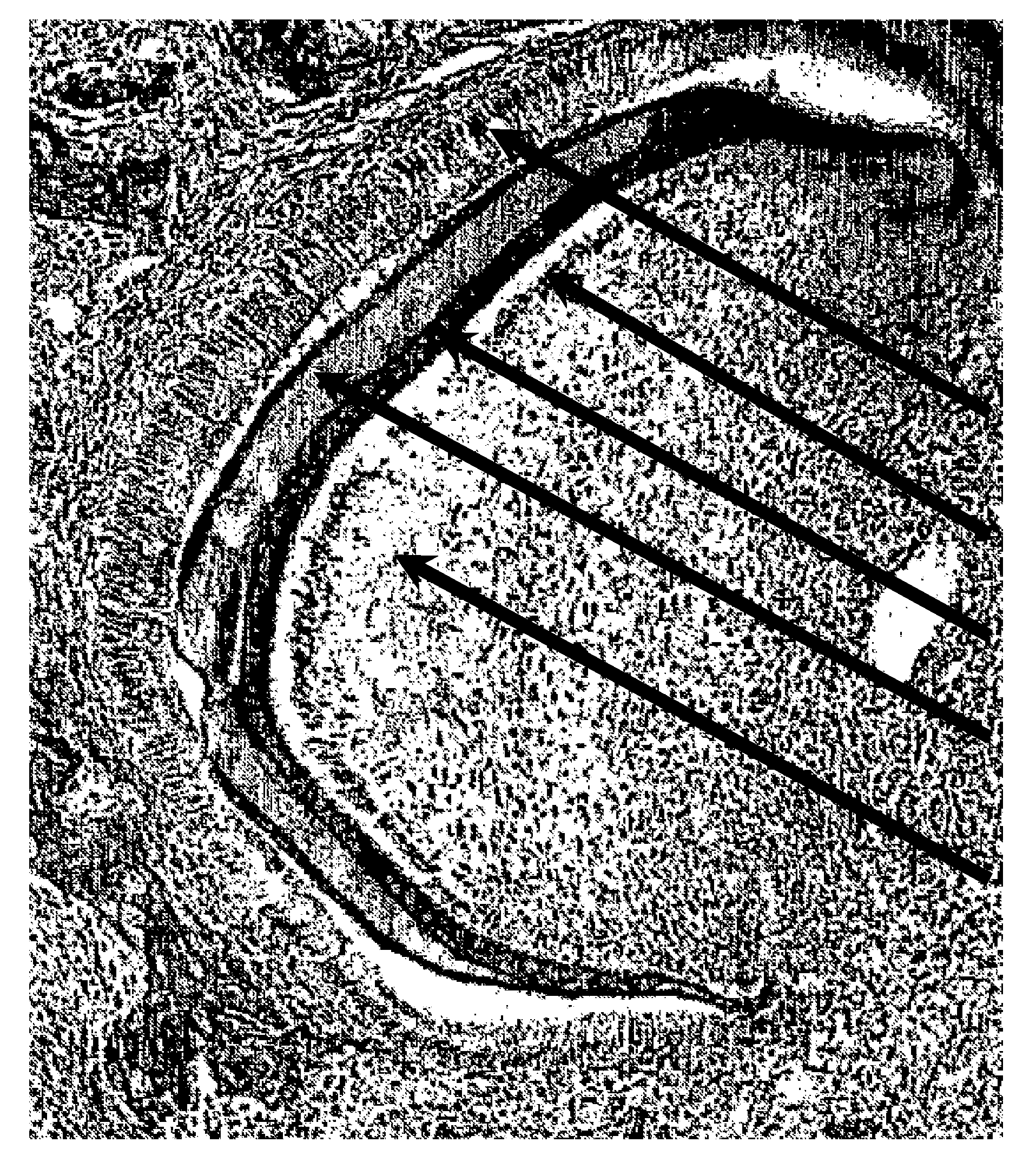Generating teeth from bone marrow cells
a bone marrow cell and tooth technology, applied in the field of teeth generation, can solve the problems of difficult cell acquisition, complex and highly skilled separation and manipulation techniques, and labor intensive process carried out by highly trained workers
- Summary
- Abstract
- Description
- Claims
- Application Information
AI Technical Summary
Benefits of technology
Problems solved by technology
Method used
Image
Examples
example 1
Derivation & Culture of the Murine Bone Marrow Cells
[0094]Bone marrow cells were collected from tibiae and femora of 6-9-week-old female wild-type mice. Five mice were killed by cervical dislocation, and femurs and tibiae were aseptically removed and dissected free of adherent tissue. Both ends of the bone were cut, and the bone cavity was flushed out with culture medium slowly injected at the end of the bone using a sterile 21-gauge needle. Bone marrow cells were subsequently suspended in minimal essential medium (MEM; Sigma Chemical Co., St. Louis, Mo.) containing 10% heat-inactivated foetal bovine serum (FBS; GIBCO BRL, Grand Island, N.Y., USA) and were maintained for 14 days in a 75-cm2 tissue flask. The medium was changed after 3 days and then subsequently every 2 days.
example 2
Preparation of Oral Epithelium
[0095]Mandibles of embryos were dissected out in DMEM with glutamax-1. The epithelium was isolated following incubation in a solution of Dispase (GIBCO BRL) made up in calcium- and magnesium-free PBS at 2 U / ml for 10-15 min at 37° C. After incubation the tissues were washed in DMEM with 10% FCS, and the epithelium was mechanically separated using fine tungsten needles.
example 3
Co-Culture of Bone Marrow Cells with Oral Epithelium
[0096]The bone marrow cells were cultured as described in Example 1 and removed by brief exposure to trypsin, collected in medium, centrifuged, washed again in medium and centrifuged twice. The cells were then counted and resuspended at two million cells in 50-100 μl medium. These stem cells were then centrifuged for 10-20 sec at 10.000 g to form a pellet which was then placed on a transparent Nucleopore membrane filters (0.1-μm-pore diameter; Costar), pre-soaked in 1% gelatin solution. Excess medium was removed from around the pellet. Cell pellets were incubated on the membrane filter supported by a metal grid for 10-15 min at 37° C. following the Trowel technique as modified by Saxén (Trowel 1959, Saxén 1966) at 37° C. with an atmosphere of 5% CO2 / 95% air and 100% humidity.
[0097]3-4 epithelia, prepared as described in Example 2, were then placed over the cell pellet. The co-cultures were incubated for a further 3 days.
PUM
| Property | Measurement | Unit |
|---|---|---|
| time | aaaaa | aaaaa |
| time | aaaaa | aaaaa |
| time | aaaaa | aaaaa |
Abstract
Description
Claims
Application Information
 Login to View More
Login to View More - R&D
- Intellectual Property
- Life Sciences
- Materials
- Tech Scout
- Unparalleled Data Quality
- Higher Quality Content
- 60% Fewer Hallucinations
Browse by: Latest US Patents, China's latest patents, Technical Efficacy Thesaurus, Application Domain, Technology Topic, Popular Technical Reports.
© 2025 PatSnap. All rights reserved.Legal|Privacy policy|Modern Slavery Act Transparency Statement|Sitemap|About US| Contact US: help@patsnap.com

